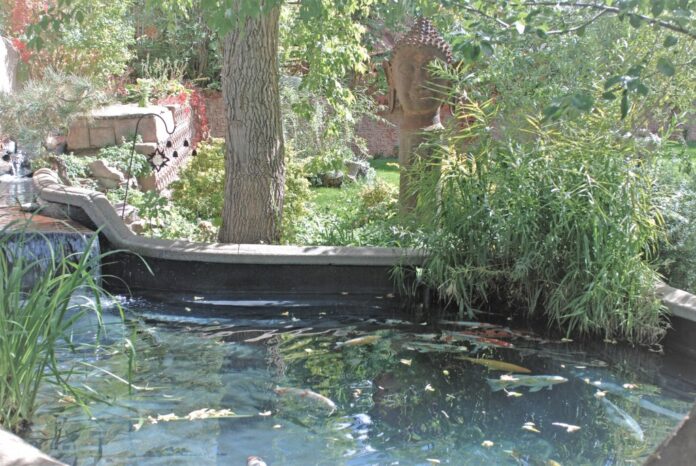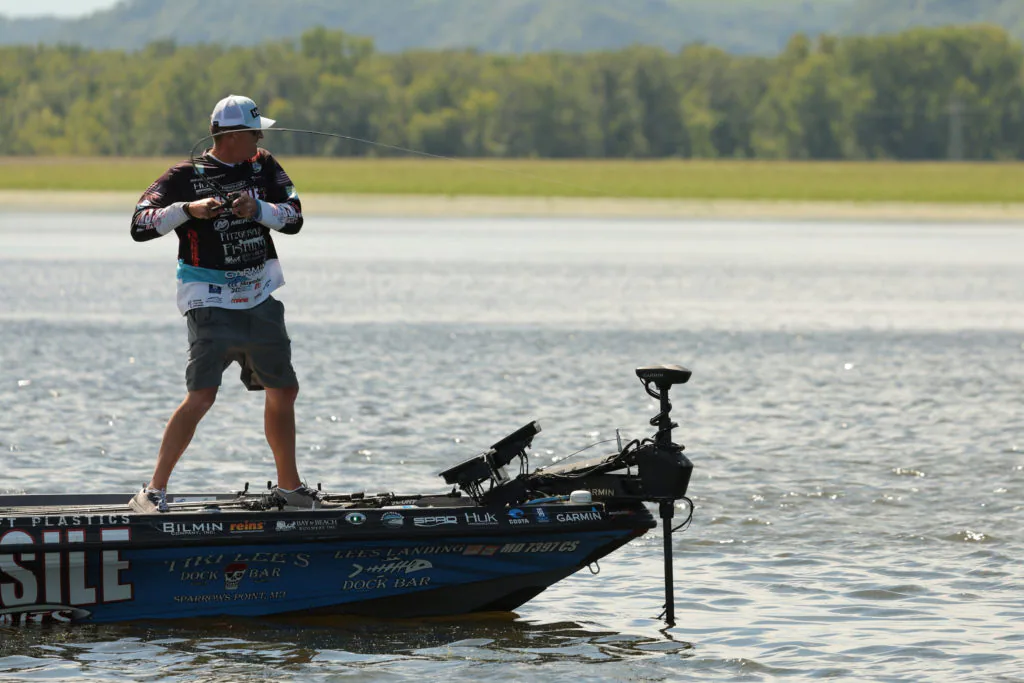Every year toward the middle of October, I get a call from my friend Al Foster. That’s when he asks three or four of us to help him “winterize” his koi pond. Koi are the colorful ornamental carp that are seen in ponds throughout the world. They are descendants of common carp and along with goldfish are the most popular freshwater ornamental fish in the world.
The oldest mention of colored carp in Japan dates to 720 A.D. The name “koi” came into usage 200 years ago when Japanese farmers in Niigata prefecture bred koi from the black carp they were raising as a reliable food source for the winter. Some of those fish were more brightly colored. The farmers started selectively breeding them to enhance that trait. Initially, they kept the colored carp for their own enjoyment. Those carp came to be known as “nishikigoi.” As the popularity of the colored carp spread throughout the world nishikigoi, which means “brocaded carp,” was shortened to “koi.”
Koi were unknown to the outside world until 1914 when they were part of an exhibit at an annual Exposition in Tokyo. They eventually made their way to the United States in the 1950s when it became feasible to fly them here from Japan. Nowadays, koi are available in many varieties of color patterns. The average life span of a koi is 40 years. The oldest is believed to have lived 230 years. The most expensive koi was purportedly sold to a Chinese collector for $2 million.
I can’t remember when Al first invited me to help with his koi pond, but it has become one of the fall events I look forward to every year. Those autumn events include big game hunting, the Blue-winged olive hatch and fishing to brook trout and brown trout that are brightly colored when they spawn in the fall.
I think part of the reason Al included me is that he knew I was a fly fisherman and occasionally fished for carp. He also knows I just like being around fish. I can’t say I haven’t wondered what it would be like to catch a koi on a fly, either.
A few years ago, he needed to drain the pond to make repairs. The koi had to be removed to holding tanks. Al asked me to net the fish and move them to the tanks because I was a fisherman. It seemed natural to him that I would be suited for this job. Hefting a 20- or 30-pound fish in a net and walking it over to a holding pond has its challenges, too. For the record, I should say that’s the closest I’ve ever come to fishing for koi.

We winterize the koi pond by assembling a structure Al and a friend designed and built a number of years ago. It looks like a greenhouse. The structure keeps the leaves off the water, discourages bears looking for a pre-hibernation protein boost, keeps other fish-loving predators out of the pond and insulates it from freezing over. It takes two or three hours to put the structure together if everything goes according to plan. Al rewards us with a barbecue when we’re done.
You must be wondering by now what does winterizing a koi pond have to do with a newspaper column devoted to the outdoors. All I can say is it’s not too much of a stretch to go from angling for common carp with a fly rod, to appreciating colored carp that have been refined by breeders all over the world for hundreds of years.
In Japan, koi are a symbol of luck, prosperity and good fortune. They also symbolize perseverance in the face of adversity. Maybe helping Al’s koi survive another winter will bring me luck and good fortune on my fishing trips in the coming year. I hope that’s true, but if it isn’t I still just like hanging out around fish. It doesn’t matter if I’m watching a trout rise to a mayfly hatch, catching a common carp on a fly rod or helping shelter koi for the winter, it’s all good.
I once heard that in ancient China people would go out to the river, set up chairs and just watch the caddisfly hatch. I don’t know if fish were rising to the caddisflies or not, but I bet they were and if they were I bet some of those people were wondering if they could catch them.
Whether you’re fishing to a tailing common carp or a rising trout or watching koi swim around in a pond, you ultimately come to believe that a well-lived life includes being outdoors and in my case around fish. That’s why I’m a fisherman. When I’m old and too beat up to wade the rivers and catch trout, I envision a day when I carry a chair to the river and simply watch the trout rise to a hatch of insects or sit quietly around a koi pond just observing the colorful fish.
If that’s a little too romantic a view of a fisherman’s life, maybe it’s just a good thing to get together with friends and help out. Besides, nobody puts together a better barbecue than Al.
Visit EdEngleFlyFishing.com to see Ed Engle’s blog, “The Lone Angler Journal.”
Credit: Source link































